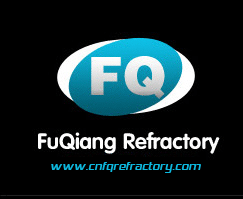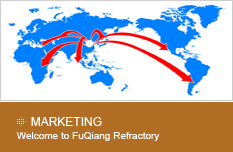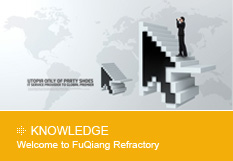Classification of Refractories
Refractories can be classified on the basis of chemical composition, method of manufacture, physical form or according to their applications.
Based on chemical composition
Acidic refractoriesThey consist of mostly acidic materials like alumina (Al2O3) and silica (SiO2). They are not attacked or affected by acidic materials, but easily affected by basic materials e.g.:-silica, alumina, fire clay refractories, etc.
Acidic refractoriesThey consist of mostly acidic materials like alumina (Al2O3) and silica (SiO2). They are not attacked or affected by acidic materials, but easily affected by basic materials e.g.:-silica, alumina, fire clay refractories, etc.
Neutral refractories
These are used in areas where slags and atmosphere are either acidic or basic and are chemically stable to both acids and bases. The main raw materials belongs to, but not confined to, R2O3 group. The common examples of these materials are alumina (Al2O3), chromia (Cr2O3) and carbon.
These are used in areas where slags and atmosphere are either acidic or basic and are chemically stable to both acids and bases. The main raw materials belongs to, but not confined to, R2O3 group. The common examples of these materials are alumina (Al2O3), chromia (Cr2O3) and carbon.
Basic refractories
These are used on areas where slags and atmosphere are basic; they are stable to alkaline materials but react with acids. The main raw materials belong to the RO group to which magnesia (MgO) is a very common example. Other examples include dolomite and chrome-magnesia.
These are used on areas where slags and atmosphere are basic; they are stable to alkaline materials but react with acids. The main raw materials belong to the RO group to which magnesia (MgO) is a very common example. Other examples include dolomite and chrome-magnesia.
Based on method of manufacture
1.Dry press process
2.Fused cast
3.Hand molded
4.Formed (normal, fired or chemically bonded)
5.Un-formed (monolithic-plastic, ramming and gunning mass, castables)
6.Un-formed Dry Vibratable refractories.
1.Dry press process
2.Fused cast
3.Hand molded
4.Formed (normal, fired or chemically bonded)
5.Un-formed (monolithic-plastic, ramming and gunning mass, castables)
6.Un-formed Dry Vibratable refractories.
Shaped
These have fixed size and shapes. These may be further divided into standard shapes and special shapes. Standard shapes have dimension that are conformed by most refractory manufacturers and are generally applicable to kilns or furnaces of the same types. Special shapes are specifically made for particular kilns or furnaces.
These have fixed size and shapes. These may be further divided into standard shapes and special shapes. Standard shapes have dimension that are conformed by most refractory manufacturers and are generally applicable to kilns or furnaces of the same types. Special shapes are specifically made for particular kilns or furnaces.
Unshaped
These are without definite form and are only given shape upon application. These types are better known as monolithic refractories. The common examples are plastic masses, Ramming masses, castables, gunning masses, fettling mix, mortars etc.
These are without definite form and are only given shape upon application. These types are better known as monolithic refractories. The common examples are plastic masses, Ramming masses, castables, gunning masses, fettling mix, mortars etc.
Dry vibration linings often used in Induction furnace linings are also monolithic, and sold and transported as a dry powder, usually with a magnesia/alumina composition with additions of other chemicals for altering specific properties. They are also finding more applications in blast furnace linings, although this use is still rare.
Your Contact Details To Us
(*)Required information








 Tel: 0086 -0371- 64156592 / 64156599
Tel: 0086 -0371- 64156592 / 64156599

